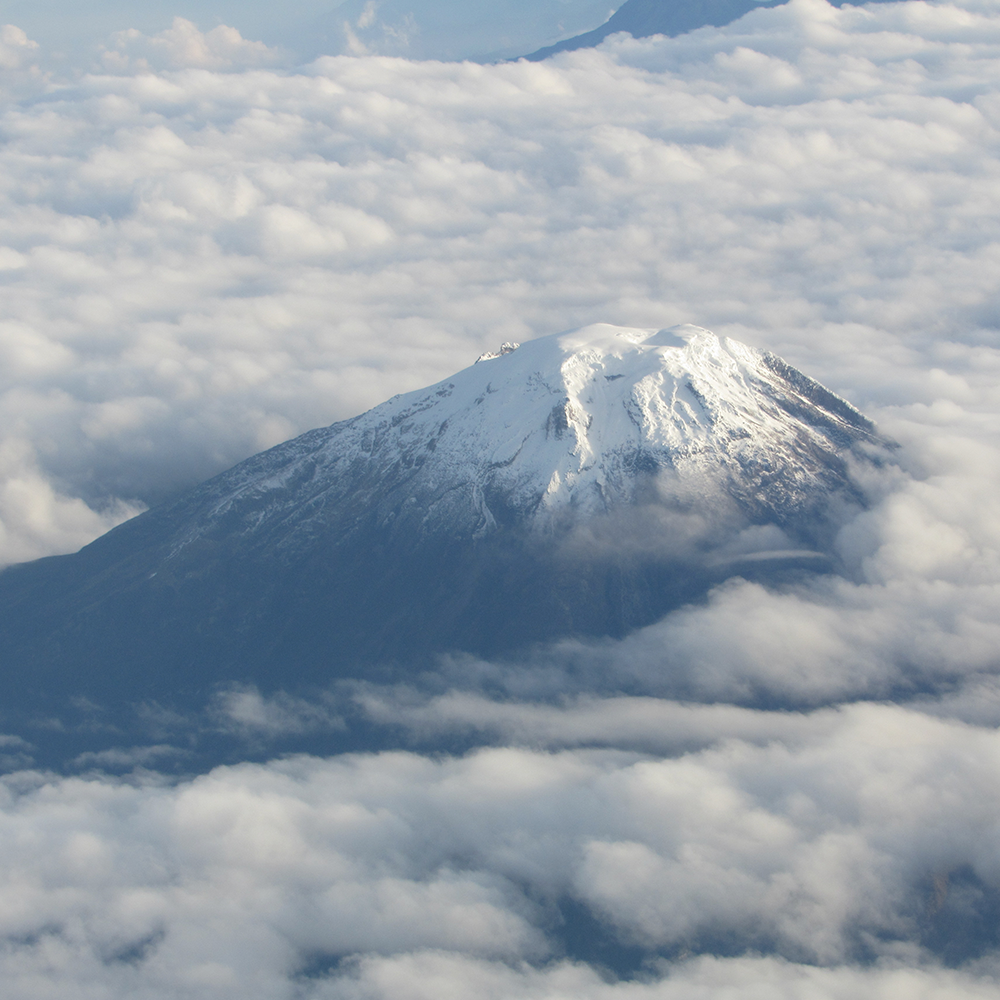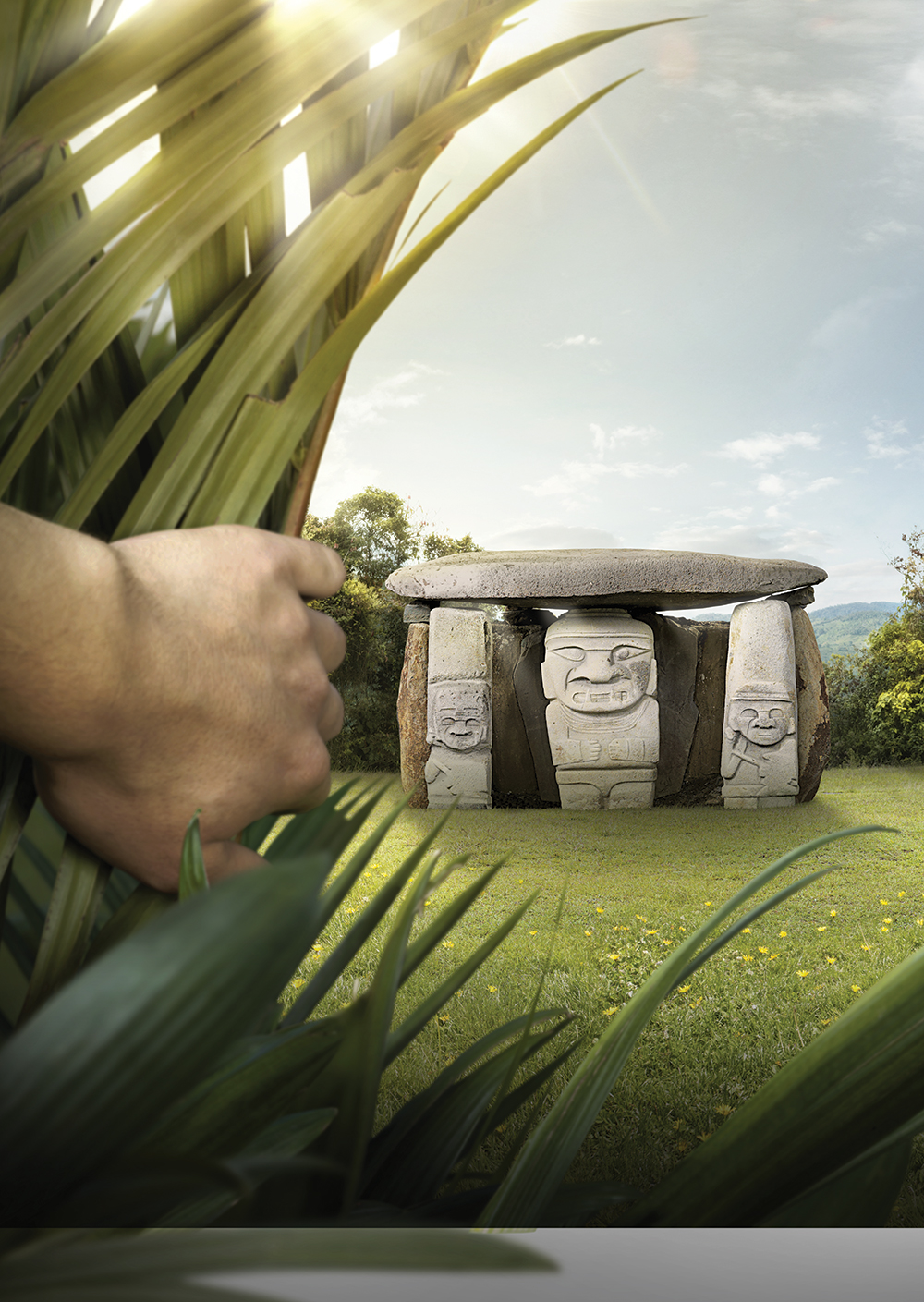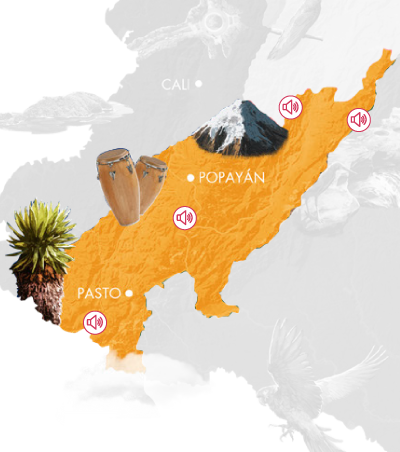
Huila
Huila, a region of natural environments where deserts, snow-capped mountains, and volcanoes converge

Credit: David_Herrera
Alt: The Nevado del Ruíz, also known as Mesa de Herveo, is one of the active volcanoes on the volcanic belt of the Andes. It is located in the Los Nevados National Natural Park, a busy tourist destination in the country.
The department of Huila is a diverse region, featuring archaeological remains and a rich geography. It is therefore considered a land that transports its visitors to an imperishable world. Its name comes from the Paez language and means 'luminous mountain', this refers to the importance of its fauna and flora.
Huila is part of the Colombian Massif. This is an ancestral land where the most important rivers are born and the páramos feed the cauca, Amazonas and Magdalena basins. It is also the territory where stone monuments that maintain balance on lush slopes and be found, and the place that keeps incredible secrets of past civilizations.
Get to know Huila and its landscapes

Photo caption: The San Agustín Archaeological Park was founded in 1935 during the term of President Alfonso López Pumarejo
San Agustine Archaeological Park
It is located south of the department of Huila, and is one of the most important places in archaeology in South America, even being declared a World Heritage Site by UNESCO in 1995. In the park lies the ancient civilization indígena agustiniana, where you’ll find places and monuments such as the Luis Duque Gómez Museum Park, the Mesitas, the ceremonial Fountain of the Lavapatas and the Alto del Lavapatas.
Tatacoa Desert
It is one of the largest arid areas of Colombia, its geographical location is privileged and beloved for astronomical observation, its landscape is bathed by red tones of earth and green tones of cactus.
Magdalena Lagoo
Laguna del Magdalena is inside a crater of an extinc volcano, this place is known for beging a mystical lagoon that gives life to one of the most important rivers in Colombia, that Magdalena River.
This is one of tourists’ favorite places due to its beauty and the majesty from which springs a river that is so important in sustaining the life of the different regions through which its waters flow.
Featured: Learn more about the Putumayo department by downloading the magazine here.
Yet the palate with flavors of Huila
The Huila offers a wide, varied and exquisite gastronomic offer that contains tamales, achiras, arepas, Huilense roast, widower of capable and other dishes that will also allow you to know its traditions through its flavors.
Parties, music and traditions
Undoubtedly, in the department of Huila there are several festivities accompanied by musical events, parades, comparsas, exhibitions and gastronomic fair. One of the most important events are the festivities in honor of San Pedro and San Pablo and also the Folkloric Festival – Reinado Nacional del Bambuco and international folklore exhibition.
The department of Huila has contributed in an important way to the national culture through the lyrics of great composers, who through their art preserve the folklore of the region inspired by its people, its landscapes and its important indigenous legacy.
The sanjuanero, the bambuco and the rajaleña are some of the traditional rhythms of the region,which thanks to the work of its inhabitants have remained in force. It is worth mentioning that these customs are instilled in people since they are small, in addition to promoting contests and festivities.
Listen to the stories of this region
Find out more about the Huila in your podcast and magazine. Also, know the best tips to boost tourism in this department in a successful way in the toolkit.

click on the audio icons on the map and listen to each story
Download, get inspired and promote
If you want to download all the material of the region (The Region Toolkit and the Magazines), click on the buttons:
COMMUNICATION TOOLKIT



